Alpine Mentors: Aspirations Fueled by Experience
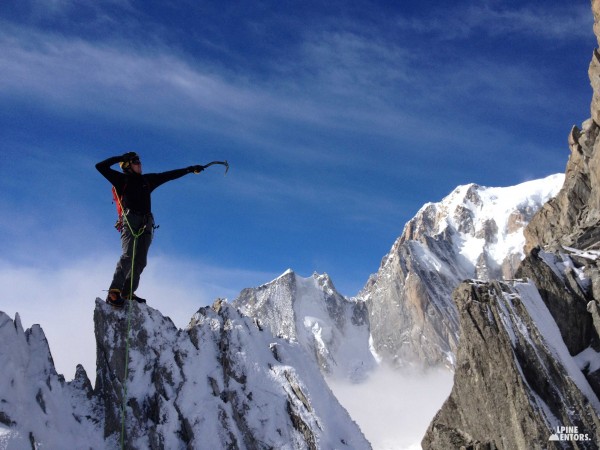
Alpine Mentors is a relatively new non-profit program for young alpinists that promotes clean, lightweight, and low-impact climbing. Co-founded in 2012 by alpinist, guide and author Steve House and his wife Eva, Alpine Mentors connects seasoned alpinists with technically proficient young climbers who aspire the climb the world’s greatest mountains.
Joining the program as a mentee is no small commitment. Over the period of two years the group spends 14 weeks traveling all over the world. While the mentees don’t pay tuition, they do cover their own travel expenses.
The first four young climbers to participate in the program are finishing up their two-year cycle this year, just as a new regional chapter begins in the Pacific Northwest. We caught up with Steve and one of the first program participants, Colin Simon, to hear about how the program got started and how it’s been going so far.
Steve, as a long-time climber, what drove you to establish Alpine Mentors?
[Steve House:] The idea is not new or unique at all. European mountain clubs in France, Switzerland, Spain, Slovenia, Austria and Germany have a long tradition in mentoring aspiring alpinists. While most of the European programs are state-funded via their alpine clubs, we formed an entirely new and independent non-profit corporation that relies on donations from the climbing community and our sponsors, such as MSR.
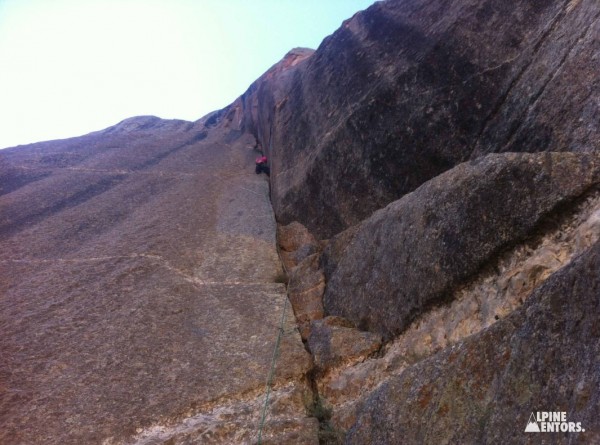
How does the program work and what do the young climbers get out of it?
[SH] The program is designed to operate on a two-year cycle where mentors help young climbers organize climbing trips and expeditions that advance their climbing skills, and then accompany them on those trips throughout the world with an eye towards the goal of safely being able to complete technical routes in the high mountains. We strive to help them at every step, from training, planning and preparation, to the final steps to the top of a dreamed-of-climb. Our goal is never to build the best alpinists, but rather to help young climbers get the most personal growth and reward from their climbing experience.
The first mentees are now 1.5 years into the program. Tell us a little bit about how it got started and what trips they’ve taken.
[SH] We kicked off the program with an inaugural group development session in Colorado where we climbed in the San Juan Mountains around Ouray and conducted safety and self-rescue training in Unaweep Canyon in the Uncompahgre Plateau.
During those first few weeks of climbing together the newly formed group decided what they’d want to climb in two years’ time and what they had to work on to achieve that goal.
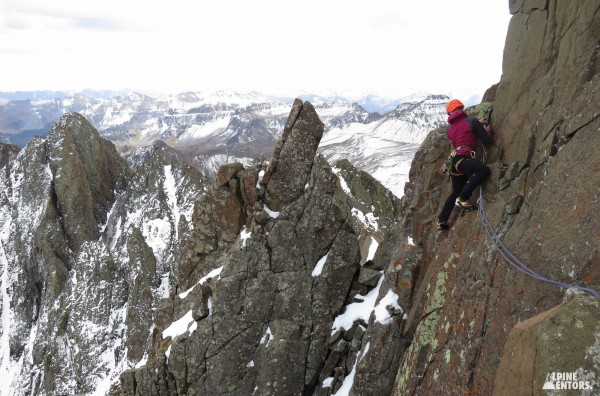
They set a goal to climb a technical route on a 6,000 m peak in the Himalayas.
It was the task of the group to come up with a trip schedule and a plan for their two years leading up to that climb. We all knew that it was going to be a very demanding and time-consuming undertaking, but only when you are in the nitty-gritty of doing it, do you really know what it means to commit so much time and effort to improving your climbing.
The schedule started off with a two-week trip in the Black Canyon of the Gunnison National Park where we practiced smooth transitions and refined our technical systems for safety and efficiency.
In January 2013 we met in Ouray again for a brief training and scheduling meeting. Based on my knowledge from over 20 years of climbing and working with a professional coach, we were able to outline training programs for everyone to be prepared for the Canadian Rockies the following spring.
Then in March 2013 we went to the Canadian Rockies and worked on ice climbing efficiency.
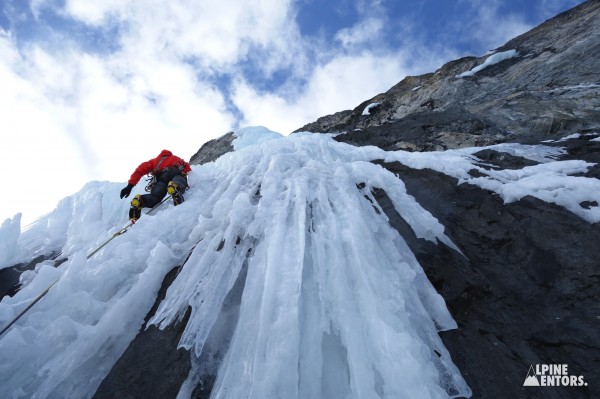
In autumn 2013 we flew across the big pond and settled in Courmayeur, Italy for two weeks where we were practicing route-finding and climbing in real complex alpine environments; we once ended up learning a bit about unplanned bivis.
[Colin Simon:] In spring 2014 we met again and tried to climb the Cassin Ridge on Denali, but the bad weather and stormy conditions only allowed us to work on our altitude skills and endurance. Right now we are planning and starting to pack for our final expedition to India, in the Eastern Garhwal Himalaya.
Steve, how have the Alpine Mentors formed as a team?
[SH] The strengths of each mentee are different: Most of them are really great rock climbers, some are cardio-vascularly strong, some have very good technical ice climbing skills and some get through with their mental strength and will power. Everyone on the team adds strengths and skills to the group; they have each improved immensely over the last 1.5 years.
How do you recruit the volunteer mentors and why do you think they are they willing to donate their time?
[SH] Good question. It can be challenging to find people who are qualified, who are willing to donate their time, and finally who have time. Luckily I have a broad network of fellow climbers who are generously volunteering for this project. I can honestly say that there are a lot of benefits for the mentors as well. It’s great for each of us who spent our lives climbing, to realize just how much we have to offer. That these young climbers go through the same things, have the same questions, the same challenges, as we each did. It always brings me back to the realization that it’s not skills that we’re teaching, it’s judgment, it’s shared experience of how much is possible when approached well.
So far I’ve had an amazing cast of fellow mentors, including: Ines Papert (D), Jon Bracey (UK), Rafael Slawinski (CAN), David Göttler (D), Rob Owens (CAN), Scott Backes (USA), Steve Swenson (USA), Bryan Gilmore (USA), and Vince Anderson (USA) come on trips. Jim Elzinga (CAN) is going to join us on our final expedition to India.
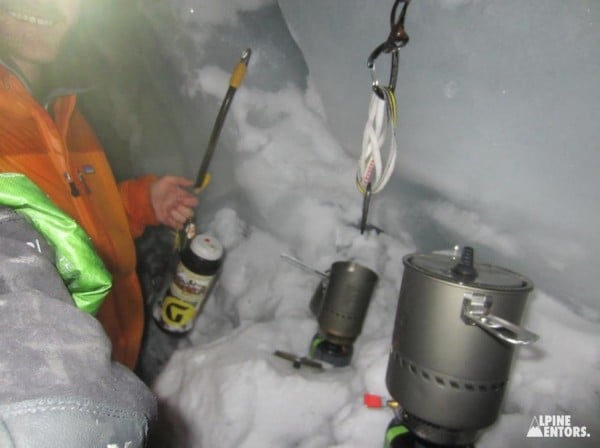
Colin, what is one of the most valuable things you’ve learned so far?
[CS] On a trip to the Alps, the Alpine Mentors team endured an unplanned bivy in a crevasse after attempting the Grandes Jorasses. In the spirit of going light, we had almost no bivy gear, but some hot drink mixes and two MSR Reactor stoves between five people. It was uncomfortable, to say the least, but we stayed hydrated, avoided cold injuries, and learned a valuable lesson about what we needed to survive, and that it’s best not to get lost in the mountains.
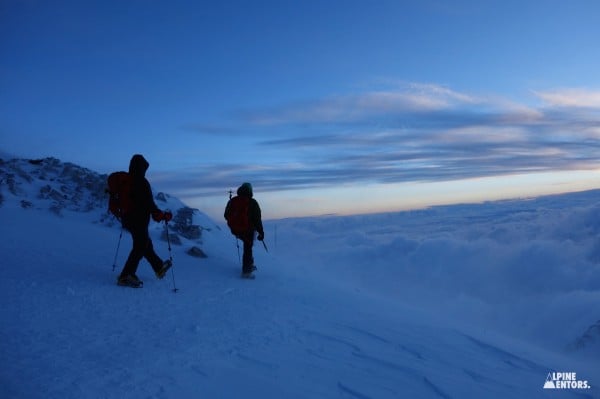
The Alpine Mentors started a new chapter in the Pacific Northwest. Why start a new group, and when did it launch?
[SH] Steve Swenson joined me as a co-mentor for the Canadian Rockies trip in March 2013 and he liked the idea so much that he volunteered to become the lead-mentor for our first regional chapter, Alpine Mentors Pacific Northwest. To expand had always been part of our vision statement, which reads: “Ultimately, Alpine Mentors is meant to become an open framework, one that can change with the people who come to fill it with energy, inspiration, and action. Alpine Mentors is a way for mentors to interact with younger, inexperienced, climbers. Those of us who dedicated our lives to climbing mountains learned much. This is where we can share that knowledge.”
Steve Swenson was enchanted with the program, but wanted to bring it home to his native PNW. He recruited Eddie Espinosa, the Northwest Region Manager for the American Alpine Club to handle the logistics, and after Eva House helped to establish the financial and legal requirements, Alpine Mentors Pacific Northwest (AM-PNW) was born.
This autumn the AM-PNW team meets for their group development sessions and will start to climb together throughout the greater Pacific Northwest region with Steve Swenson and alternating mentors like Graham Zimmermann, Kate Rutherford and Blake Herrington.
The final expedition for the first Alpine Mentors group is this October to the Eastern Garhwal Himalaya in India. You can read all the detailed trip reports on the Alpine Mentors blog.
To find out more about the program, application process, and the new Pacific Northwest chapter, visit: www.alpinementors.org
